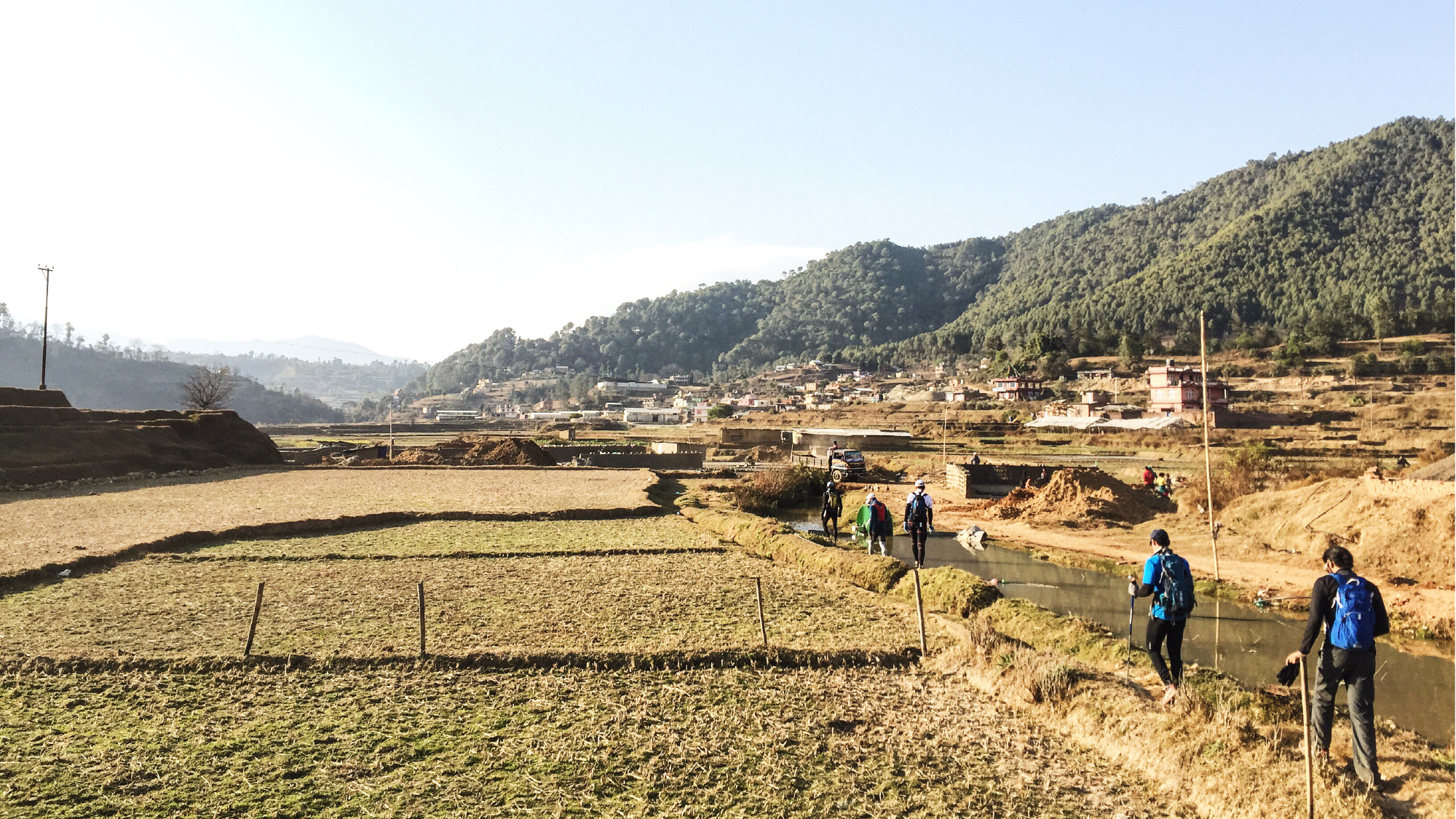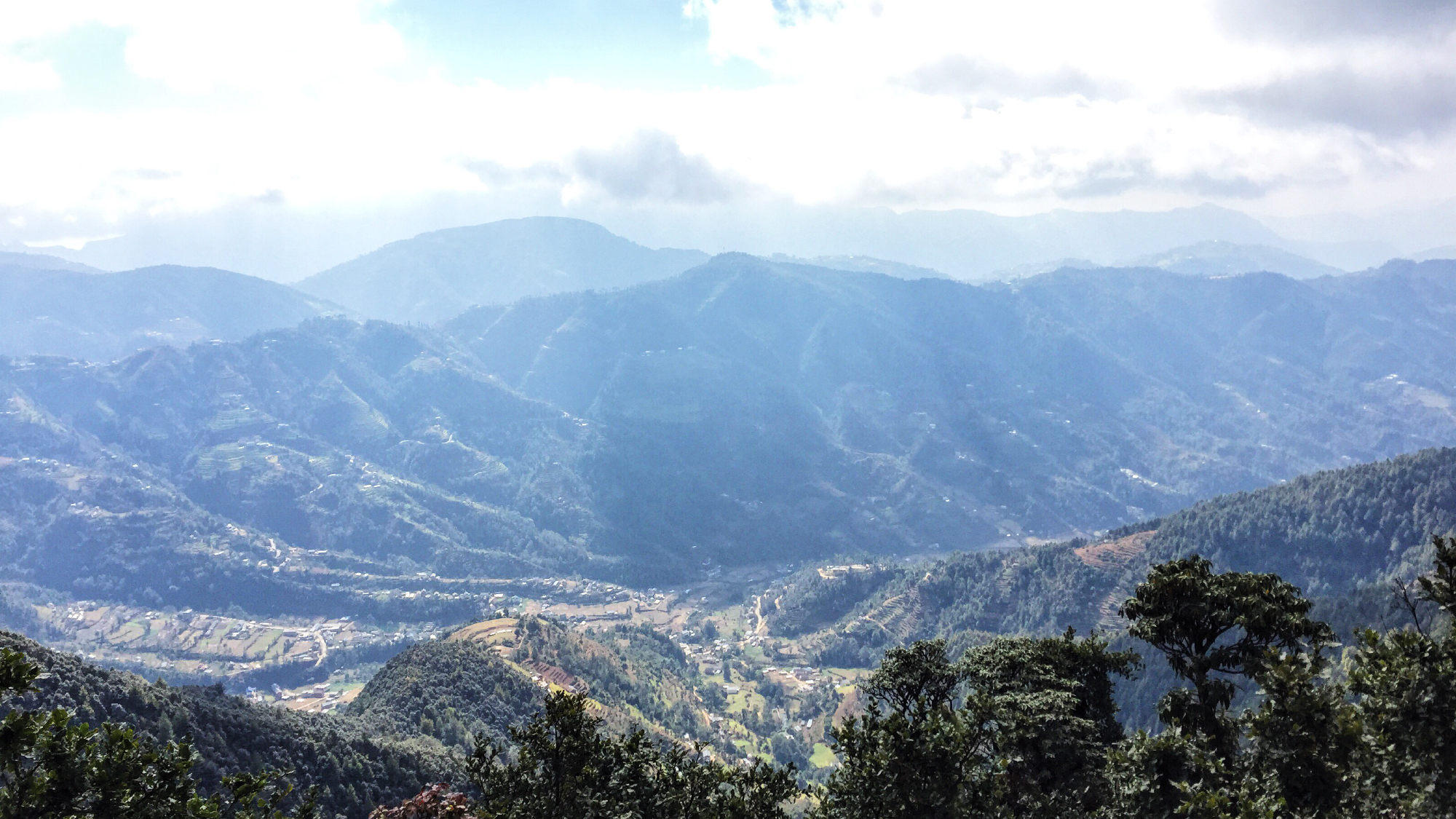The Mountains are Calling and I Must Go
“Mental Muscle” is a project started in 2015 by a group of NUS medical students. It aims to raise public awareness of mental illnesses that burden Singaporeans, as well as the need for social support for these individuals. The project also aims to help dispel stigmas that are applied to such patients and their illnesses. By completing in a grueling desert ultramarathon in Namibia in December 2016, the founding group of students successfully raised more than $56,000 for the Singapore Association for Mental Health (SAMH).
Taking over where their seniors left off, a fresh team of six medical students traveled to Kathmandu, Nepal late last year to run 200km of the Kathmandu Valley Rim in five days, the first team to complete such a trail. The team, Hargaven Singh Gill, Ho Jun Kiat, Huang Juncheng, Keith Ching Wei Jie, Navkaran Singh, Thaddeus Tan Jun Kiat, share their experiences during this unforgettable trip.
PREPARATION
With a tight timeline of four months, our team worked hard to train for the Kathmandu Valley Rim, while managing the administrative tasks of our project and juggling school work. Our key events building up to our race comprised the Newton 32km challenge, the North Face 100km race and the StanChart 42km marathon. We carried backpacks weighing 5-8kg during the races to prepare us for the trail in Kathmandu, where we would be carrying our own gear, water and food supplies.
We had set a goal of raising $25,000 for the SAMH’s YouthReach division. We strived to meet this goal by reaching out to friends, corporate organisations, charity events and publicity platforms.
The toughest part of the trip preparation was acquiring equipment and sponsorships. We went knocking on the doors of many companies with our team manifestos in hand, and although we were turned down many times, the team was not dismayed because we knew the struggles we were facing paled in comparison to those faced by people with mental illnesses.
We were fortunate to have the guidance of our mentor, Associate Professor Tay Sook Muay, from Singapore General Hospital’s Department of Anesthesiology. Her department and institution provided funds to cover part of the operational and race costs. We were also fortunate to have been guided by Singapore’s top marathoner and NUS alumnus, Dr Mok Ying Ren, and another inspiring individual, Dr Kumaran S/O Rasappan (who summited Mount Everest). Both shared their expertise on running and managing Nepal’s terrain respectively. While our project was not under the
purview of NUS, our Dean’s Office offered helpful advice on safety and planning. We also had the good fortune of having supportive friends who trained with us, actively disseminated our outreach efforts, and donated to our cause both monetarily and with their time.
THE RUN
Upon arrival at Tribhuvan International Airport, we took a 30-minute drive to our accommodation in the heart of Thamel – heart of the tourism industry in Kathmandu. It was bittersweet knowing that within 24 hours, we would be leaving this hotspot, though we were encouraged by the thought that we would be returning to it for a well-deserved rest after our five-day odyssey.
Raj and Narayan, the two Nepalese ultramarathoners who were our leads on the run, met us for dinner on the first evening and we were swept away by their stories: Raj completed a 1,076km marathon in 17 days and Narayan accidentally came in second in a marathon in the UK. Physical limits clearly did not apply to them.
The trail run started at 7.15am on day 2 of arrival and we immediately understood what Nepal’s top ultramarathoners are capable of – within minutes we had lost sight of our running leads. After slowing down to our pace and despite running 200km, they did not break a sweat nor sustain any form of injury at the end of it all.
No amount of training could have fully prepared us for the unpredictable terrain, or the frequent elevation changes from 1,300m to 2,200m, and then to 2,600m. There was a mix of gravel, sand, mud, vegetation and roads amidst upslopes and downslopes (what we considered upslopes were downslopes to our two accompanying runners).

From the highest point of the Kathmandu Rim at “Phulchowki” to the lowest point in the farmlands of Kathmandu Valley, it has been a long day for the team. Little did we know it would be our longest night, lost, with headlamps strapped to our chest and heads, navigating the unknown. That night taught us strength in unity, patience in adversity, and trust in our mentors to see us through the night.
There were nights our team got lost, but those were also the nights that were filled with laughter and camaraderie, because we knew that we were a team fighting for the same cause. Our favorite moments on the run were when the team ran on the ridge lines, and got lost walking in circles on the third night. On both occasions, we did not know the destination nor how long more the trail would last. However, when we gave up the need for certainty and trusted in those shepherding the team, we learnt to live fully in the present, in the company of those around us, and that was all that mattered.
“There is magic in these mountains,” Raj would say, and he was quite right.
Running on the ridge lines, away from the city and buzz, provided a quiet respite for our minds to distil our thoughts and reminisce as 2016 drew to a close. Being at the highest points of Kathmandu allowed us to transcend our personal limits and worries, to acquire new perspectives for the year ahead.
OUTREACH AND OUTCOMES
Is this the end of our journey? Certainly not. We have merely begun yet another chapter of our lives. Completing this adventure was just the spark that ignited a passion for trail running, for we have learnt much more about what the sport
really is. It is, and will always be, an enlightening experience to watch the grace with which trail runners propel themselves onward, despite the fatigue. And that is what life is about — moving forward with courage and tenacity whilst leaving a trail for others to follow.
After successfully completing the Kathmandu Valley Rim, covering 200km in five days, we were thankful to be home in time for Christmas — and the upcoming fourth-year Professional Examination. Thereafter, we will be focusing on outreach efforts to junior colleges – giving talks or conducting workshops on mental health awareness and resilience.
We have surpassed our goal of raising $25,000 for the SAMH, but we will continue to give our best to represent a meaningful cause.
We invite you to join us in our fight against the ignorance that leads to stigmatisation of people with mental health difficulties.
For more information on Mental Muscle, please go to mentalmuscle.org
or follow us on Facebook: fb.com/mentalmuscle.

Running down from the highest peak, “Phulchowki”, to our resting point in the Kathmandu Valley, the team came across a hazy but scenic view, reflecting our inner state of minds – clarity of our purpose in Nepal, but unsure if a 200km trail would be too extensive for completion. Regardless, we were past the halfway mark of 100km.
